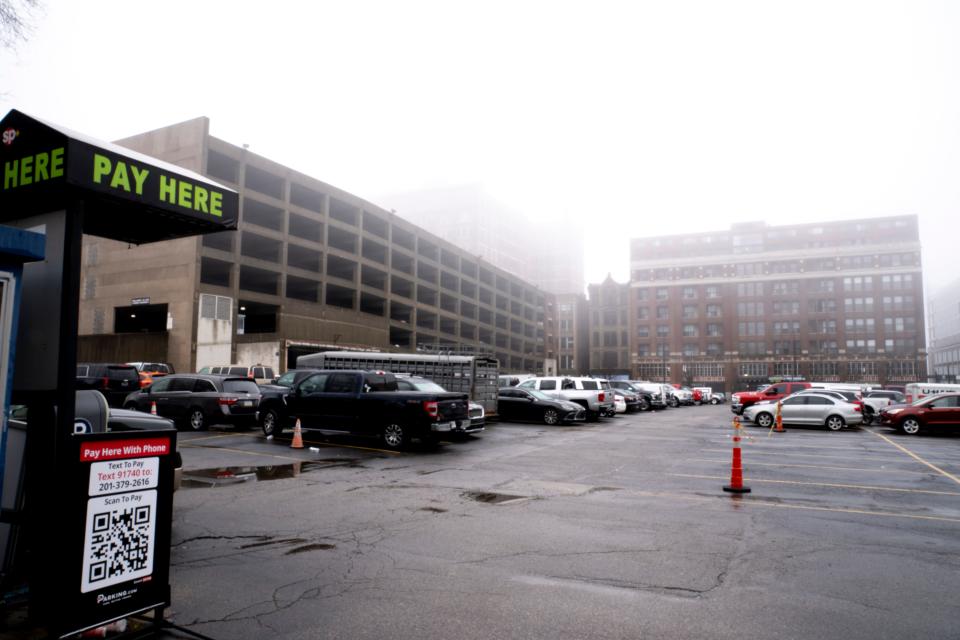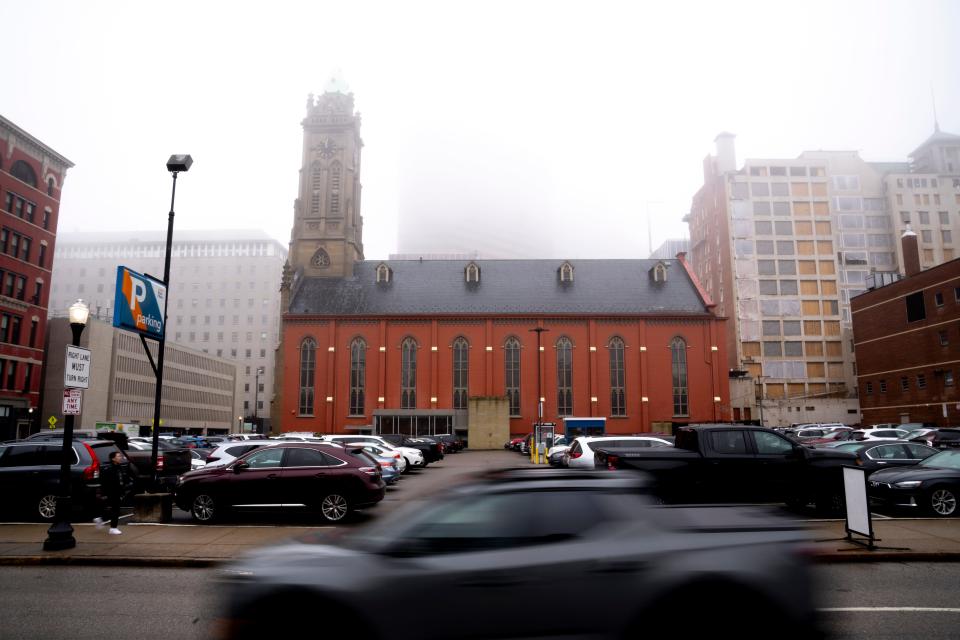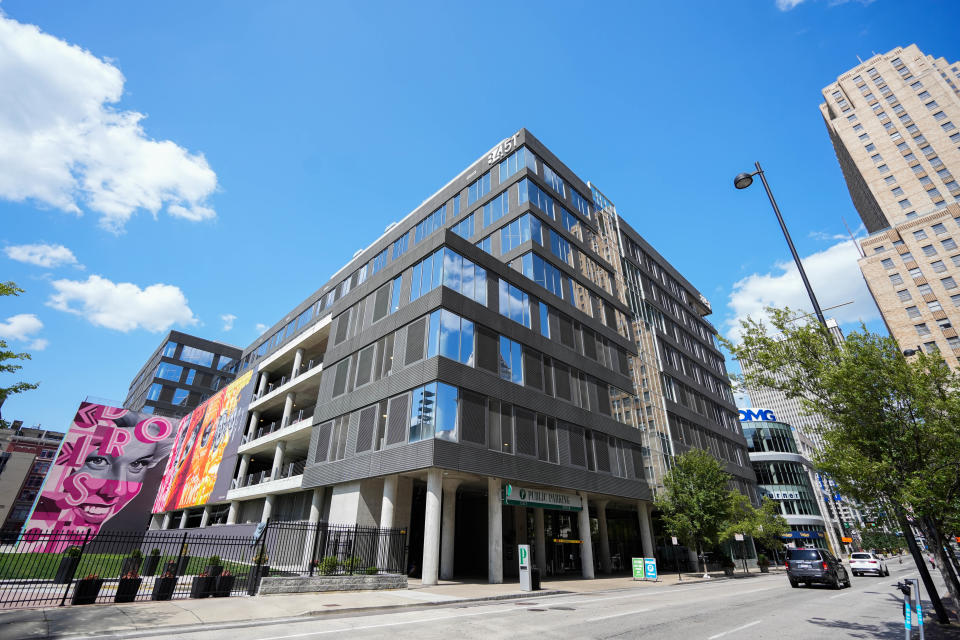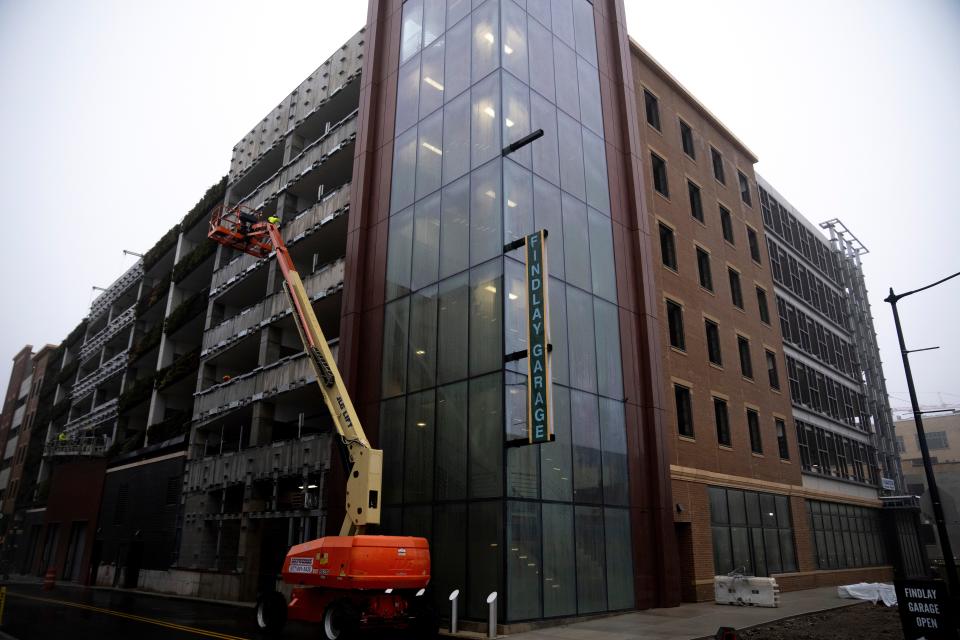Cincinnati could be the latest city to ban new Downtown parking lots, part of a national movement to better use existing land and curb carbon emissions.
This week, Cincinnati City Council will vote on amending the city’s zoning code text to prohibit new surface lots in all of Downtown and parts of the East End, Mount Adams, Mount Auburn, Pendleton, Over-the-Rhine and the West End, an area known as the Downtown Development Zoning District.
The vote is scheduled for Wednesday afternoon at City Hall. Online viewers can check out the live stream on Citicable.
Why ban new parking lots in and around Downtown?
The city’s planning department estimates that 13% of the entire district is covered in 150 surface lots. That doesn’t include garages.
Council member Mark Jeffreys introduced this idea to ban new parking lots in 2022, citing surface lots as dead space that contributes to urban heat in summer, poor air quality and increased stormwater runoff.
Planners determined that not only would banning new lots promote new development in existing available lots, but it would also increase walkability and slow Downtown traffic, according to a city zoning study.
In early December, the city’s planning commission voted to recommend the zoning change to ban new parking lots.
New surface lots are already banned in over half of downtown Cincinnati, an area called Subdistrict W (see above graphic). This would expand the ban area.
There’s a caveat though: temporary lots could be approved. To make a project financially feasible at its start, a developer would be able to request to build a surface lot for two years with a possible five-year extension.
Developers would have to adhere to stricter design guidelines to build these new lots, too. Instead of pouring asphalt or concrete, they must use heat-reflective materials or permeable pavers. Any of these new lots would require electric charging stations as well as trees or other landscaped areas between parking spaces.
Don’t we need more parking?

Downtown Cincinnati alone already boasts 40,000 parking spaces. That doesn’t include the 1,980 spaces that make up on-street metered parking, of which only 47% was used from summer 2022 to summer 2023, according to the city.
While parking in the urban core is a pressing issue for Enquirer readers, only 81% of off-street commuter parking (lots and garages) was used from spring 2022 to spring 2023, per a Cincinnati Center City Development Corp. (3CDC) parking report.
For many people, including Downtown residents and workers, banning new surface lots is an important step in creating a more vibrant city. The city’s planning department received 178 letters of support.
Groups such as the Downtown Residents’ Council and 3CDC also backed the plan during public meetings, while opponents said the changes may deter future developments or harm business.
Such a dispute flared up at the former Greyhound station, where developer Chavez Properties wants to turn the abandoned station at the edge of downtown into a parking lot. (Since September 2022, the property has been part of Interim Development Control District No. 88, where a temporary ban on new lots has been in place.) The planning commission approved Chavez’s plan.

What other cities have banned new lots?
Cities across the U.S. are experimenting with reducing parking minimums for new construction and implementing new design standards for lots. Near Cincinnati, Cleveland bans new lots in one area through its zoning code while Lexington, Columbus, Toledo and Louisville encourage heavy landscaping, fencing, special lighting or public art around lots.
One state has taken it a step further: Last January, California introduced a statewide ban that keeps local governments from mandating spaces be built next to new developments near transit stops.
Other cities like Nashville have also done away with parking minimums to encourage more affordable housing development, rehabilitate existing building stock and solve the nationwide housing shortage. Parking rules are impediments to all of that because auto ownership falls by up to 40 percent as residential density doubles in cities, noted Cincinnati’s zoning study.
So, Cincinnati’s new rule wouldn’t solely bolster development in the urban core, it would stop building owners from tearing down existing buildings and putting up parking lots − something that’s happened 10 times since 1998, according to the planning department’s research. In contrast, 13 new buildings have been constructed on top of previous lots, including the Hard Rock Cincinnati, Paycor Stadium and 1010 On-the-Rhine, which houses apartments, a parking garage and Downtown’s only grocery store, Kroger.
Don’t worry, parking garages will more than make up for the loss of new lots

For those who may complain there aren’t enough parking spots in downtown Cincinnati − or that parking is hard − a significant number of garages have been erected in the last decade to help solve the area’s perceived parking problem. And more are on the way:
-
In 2015, the competition of the 84.51 building brought with it 1,110 spots at the Fifth and Race Garage.
-
A 584-space above-ground garage was built within the block-long Fourth & Race Apartments building in the heart of Downtown in 2020.
-
Office-to-condo conversions like the Terraces project and the construction of a new convention hotel will also add new or rehabbed parking spaces to the city’s center.

New garages just outside the Downtown Development Zoning District also help alleviate parking woes in the urban core:
-
Last month, the county completed the construction of a $31 million above-ground, mixed-use garage near Findlay Market with 515 spaces.
-
FC Cincinnati’s $300 million mixed-use entertainment district is expected to add up to 500 spaces next to TQL Stadium by 2026.
.
This article originally appeared on Cincinnati Enquirer: Is Cincinnati banning new parking lots?
Signup bonus from





